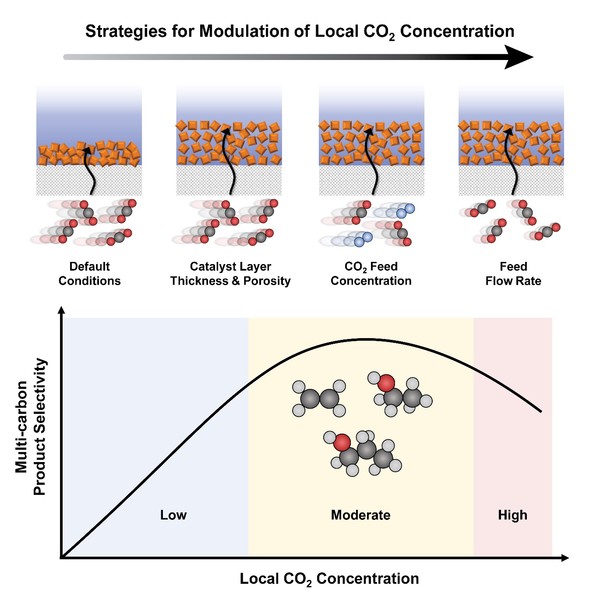A group of researchers led by Professor Jihun Oh from the Department of Materials Science and Engineering have presented three new approaches for modulating local carbon dioxide concentration in gas-diffusion electrode (GDE) based flow electrolyzers. Their study showed that moderate local CO2 concentration can effectively promote carbon-carbon coupling reactions and generate multi-carbon molecules.

CO2 electrolysis, which converts CO2 into valuable chemicals traditionally derived from fossil fuels, has the potential to contribute significantly to the global efforts to reduce anthropogenic CO2. In the past, studies focused on the design of catalysts and tuning of reaction conditions to achieve highly selective conversion. The new research, which focuses on local CO2 concentration as a significant factor, provides a new approach for improving selectivity towards more useful multi-carbon products.
The research analyzed the relationship between local CO2 and multi-carbon product selectivity during electrochemical CO2 reduction reactions. Using mass-transport modeling of a GDE-based flow electrolyzer, which utilizes copper oxide nanoparticles as model catalysts, the team identified that the catalyst layer structure, CO2 feed concentration, and feed flow rate can be controlled to modulate the local CO2 concentration within the electrolytic system.
Furthermore, the study demonstrated that by restricting and providing moderate local CO2 concentration, C-C coupling can be improved compared to the conventional method of providing maximum CO2 transport, which leads to sub-optimal multi-carbon product faradaic efficiency. Their experimental evidence shows that selectivity rate increased from 25.4% to 61.9%, and from 5.9% to 22.6% for the CO2 conversion rate.
According to Professor Oh, “this finding is expected to deliver new insights to the research community that variables affecting local CO2 concentration are also influential factors in the electrochemical CO2 reduction reaction performance.” Their paper was featured in the May issue of Joule, and will serve as a valuable guide for tuning CO2 mass transport of multi-carbon products.

